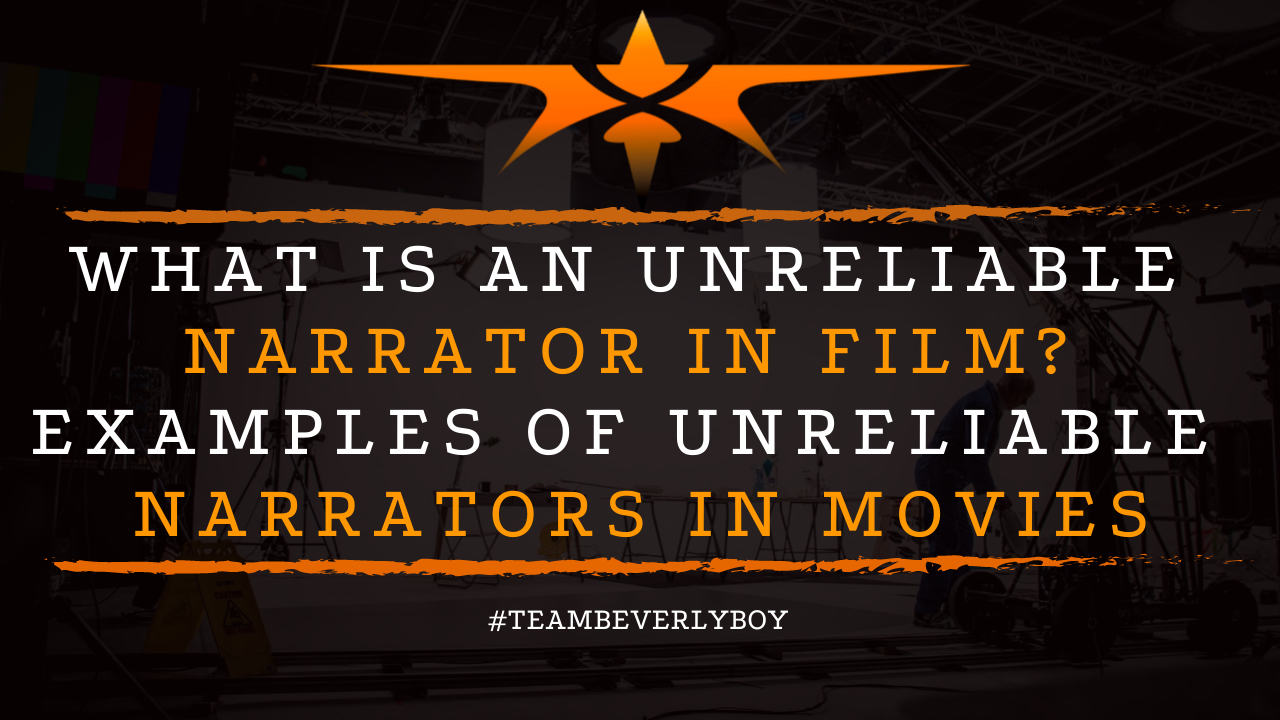
What is an Unreliable Narrator in Film? Examples of Unreliable Narrators in Movies
We’ve all been the victim of the unreliable narrator in film. You know the one. It’s the narrator who has their facts wrong, and whose credibility is, well, misguided. Unreliable narrators are frequently used in filmmaking to generate suspense, suspicion, and misdirection among the audience. When they’re used properly, they have the power to push against both subjectivity and a bias that paints a picture that is not quite what it may seem.

What is an Unreliable Narrator in Film?
The unreliable narrator is one whose credibility gets thrown out the window following a misguided truth. Or an event within the story in which the audience is led to believe one thing by the narrator.
And they later find out something entirely different. Also sometimes called an “untrustworthy” narrator, the unreliable narrator in film is flawed in some way, particularly in their ability to deliver the story without bias.
Every Story Has Two Sides
If you think naturally about how a story is told, consider the saying, “every story has two sides” or “there’s two sides to every story,” what does this mean? In short, it means that we’re all unreliable narrators in some capacity.
We all tell stories the way we perceive them to be. But that doesn’t exactly mean that we all tell stories exactly as they “are” or exactly as they did occur. We’re all biased in some manner and to some extent, just like the unreliable narrator.
In film, the unreliable narrator is someone that has a unique perspective on the story and the audience follows the perspective. But there’s a certain degree to which the audience must know about the narrator’s bias.
Perhaps the unreliable narrator lacks all of the information necessary to tell the story in full. Or they may translate things differently. Or they could have a clear bias that is unfolding right in front of the audience.
Types of Unreliable Narrators in Film

There are a number of different types of unreliable narrators in film. We’ve seen the unreliable narrator used in literature over many centuries and it continues to be a prominent feature in many of the films we watch in present time, too.
It’s very important for the filmmaker to be able to create the unreliable narrator without coming across as overly “gimmicky”. But, at the same time, unreliable narrators resort to gimmicks most of the time.
In other words, the narrator is likely to compromise his own credibility in more ways than one, but it’s important that this is done with care to ensure that the audience doesn’t find the entire feel of the narration to be cheap or poorly exposed.
Let’s take a look at the most common types of unreliable narrators in film and what each of them mean:
The self-preservationist
This is the narrator that’s going to lie for obvious reasons, particularly to preserve their own interests. This narrator is going to do whatever it takes to save themselves regardless of the lies they must tell in the process. This is the narration style used in Gone Girl and Wonderland.
The Naif
This is the narrator that has no ulterior motives behind any misguided truths or lies that they may have delivered. They are actually innocent, despite having presented a different view of the story it wasn’t intentional.
This is the narration style in Forrest Gump and The Adventures of Huck Finn.
The Embellisher
This is the narrator that is going to tell lies simply to make the story more interesting. Or to protect themselves from recalling things the way they actually happened because it could be too painful.
They embellish either to cushion or minimize the severity of a situation. This is the narration style in Life of Pi and Big Fish.
The Madman
This is the narrator that is psychologically flawed to the point that they cannot understand certain pieces of information within the story. This is the narration style in Joker and Fight Club.
How the Unreliable Narrator is Written in a Screenplay
The unreliable narrator is a popular means of creating suspicion or suspense for a film but it must be written in the screenplay just right or else it can come across as too gimmicky and unbelievable.
You certainly don’t want unreliable to make the entire story unbelievable or otherwise uninteresting. Thus, the desire to write the unreliable narration can result in a variety of different ways of establishing this.
Embellishment & Deception
Filmmakers have the option of creating the unreliable narrator in any of the above scenarios. The narrator might embellish the truth because they are afraid of recalling the story exactly how it happened for fear of bringing up past memories.
Or the narrator might recall the story in a particular way because they have a psychological disconnect or illness that results in them recalling the events in a particularly different manner.
One of the most important things to consider when incorporating an unreliable narrator into your screenplay is that you’ll need to plant the seed of deception for your audience. But you don’t need to lay it all out on the line.
Unreliable narrators almost always seem mostly reliable, until those small seeds are planted in which the audience begins to pick up on a lack of credibility.
In Summation
There are many different ways to achieve the unreliable narrator in film. Just look at any story, and the potential ways that it could be delivered or interpreted. Think of the unreliable narrator as someone who interprets and delivers the story in a different capacity than what you would.
Just like there are two sides to every story, there are multiple ways to establish an unreliable narrator in film.


